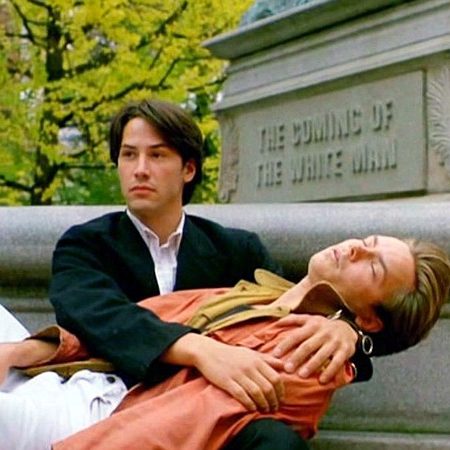It’s as if color excited him again, only instead of cornflowers and lilies and poppies the unexpected and often tacky juxtapositions endemic to 1980s fashion did the trick. No matter how thoughtful and droll My Night at Maud’s and Claire’s Knee were, writer-director Eric Rohmer filmed his best work two decades later. At the dawn of the Mitterand era with his Comedies and Proverbs series, Rohmer figured how to embellish epigrams; by the time he began his Tales of the Four Seasons, thanks to cinematographers Luc Pagès and Diane Baratier, he had perfected his method. Space and light and talk: Rohmer films are the visual equivalents of Saint Etienne albums.
Thanks to Coral Gables Art Cinema, audiences can (re-)acquaint themselves with the master’s late work, much of which was unavailable or hard to find on home video. Watching them in succession was like listening to a composer weave in a leitmotif from an older symphony. Two of the four Tales depend on what like confidence tricks: a woman, having earned the trust of a new or old friend, appears to betray her in the name of love; no surprise then that A Tale of Springtime (1990) and A Tale of Winter (1998) are the strangest and strongest.
About A Summer’s Tale, I wrote several years ago, “Rohmer likes creating men and women about whom it’s difficult for an audience to take their measure.” By contrast A Tale of Autumn, the film I’ll concentrate on, has the merit of introducing characters who tell us who they are. “You strive for ambiguity,” young Rosine (Alexia Portal) observes to Etienne (Didier Sandre), the philosophy professor she used to date; Etienne likes younger women, a leitmotif in Rohmer’s work, a fact that occasions no regret. But the core of A Tale of Autumn, set in the Rhône Valley, is the friendship between winemaker Magali (Béatrice Romand) and Isabelle (Rohmer regular Marie Rivière). A widow of Tunisian descent with an abundance of dark curly hair, Magali has put her energy into the vineyard she inherited from her father, the vintage of which impresses Gerald (Alain Libolt), the man who answers the personal ad Magali has secretly posted for Magali’s sake. This development inspires the usual misunderstandings.
Rohmer films aren’t literate, they’re “literate,” their patina of erudition coming from decently intelligent men and women limning how romance affects mental health. Words are defenses, aikido: they’re not weapons. In Rohmer’s world the women think through the complications they’ve created with Euclidean rigor; the men tend to be simps, smug over their cigarettes and spirits. In a Tale of Springtime, the four jousting characters debate Kant while slicing a stubborn ham. A Tale of Winter builds to a splendid climax at a wedding. Roger Ebert’s contemporaneous review understood what Rohmer achieved:
Since we like Gerald (Alain Libolt), the guy who answered the personal ad, and think Etienne is a twerp, we know who we’re cheering for, but Rohmer creates quiet suspense by elegantly choreographing the movements at the party–who is seen, and when, and why, and in what context–until finally a smile and a nod of approval are exchanged over a glass of wine, and we feel like cheering. (The approval is of the wine, not the characters, but from it all else will follow.)
Audiences often confuse pretty pictures with cinematography. Going back to his days working with Néstor Almendros, Rohmer was expert at situating characters as comfortably in chirping meadows as in Paris studios; his actors, always on the move, make these places look lived-in. My favorite sequence in A Tale of Springtime takes place in the apartment of philosophy professor Jeanne, played by Anne Teyssèdre (Rohmer sure liked philosophy professors; didn’t he know any engineering professors?). Why does she move around the space as if it were unfamiliar? She notices rumpled sheets, picks up her paperback copy of Critique of Pure Reason. The sequence, nearly five minutes long and wordless, has its point: her cousin is crashing at Jeanne’s. We register Jeanne’s quiet dismay that she has lost her privacy, and this moment represents a brief moment of reconnection with her living quarters.
This level of visual subtlety distinguishes late Rohmer from his more remunerative early films. As we ease out of the exigencies of lockdown and anticipate — we hope! — a normal-ish summer, Tales of the Four Seasons whets the appetite with anticipations of good wine, better friends, and geography that teases out the best of both.
Tales of the Four Seasons are streaming at Coral Gables Art Cinema. Other theaters nationwide may do so too.


2 thoughts on “Eric Rohmer’s ‘Tales of the Four Seasons’ the ultimate valentine to friendship, chatter, and wine”